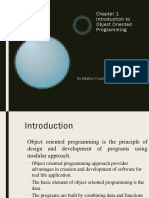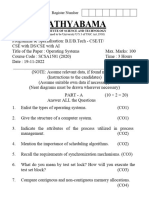0% found this document useful (0 votes)
11 views12 pagesJava Oops by EDUREKA
The document provides an overview of Object-Oriented Programming (OOP) concepts in Java, including key principles such as Inheritance, Encapsulation, Abstraction, and Polymorphism. It explains the benefits and challenges of OOP, along with detailed examples of each concept, including different types of inheritance and how to achieve encapsulation and abstraction in Java. The document aims to help readers understand how to apply these OOP principles to enhance Java applications.
Uploaded by
Abdenour BarecheCopyright
© © All Rights Reserved
We take content rights seriously. If you suspect this is your content, claim it here.
Available Formats
Download as PDF, TXT or read online on Scribd
0% found this document useful (0 votes)
11 views12 pagesJava Oops by EDUREKA
The document provides an overview of Object-Oriented Programming (OOP) concepts in Java, including key principles such as Inheritance, Encapsulation, Abstraction, and Polymorphism. It explains the benefits and challenges of OOP, along with detailed examples of each concept, including different types of inheritance and how to achieve encapsulation and abstraction in Java. The document aims to help readers understand how to apply these OOP principles to enhance Java applications.
Uploaded by
Abdenour BarecheCopyright
© © All Rights Reserved
We take content rights seriously. If you suspect this is your content, claim it here.
Available Formats
Download as PDF, TXT or read online on Scribd
/ 12



















































































